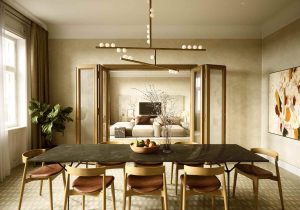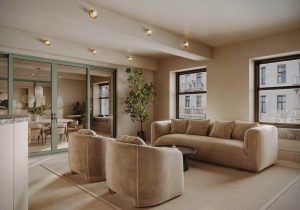As an interior designer, you’re bound to deal with clients with varying tastes and preferences, along with those who have different work ethics. While most of your interactions with your clients are bound to be smooth sailing, there could be occasions when you have to deal with a challenging client or two. There could be several reasons for these challenges, from breakdowns in communications, different tastes and preferences, or even due to the client having unrealistic expectations. Successfully handling challenging clients is a crucial skill for any business professional aiming for sustained growth and positive client relationships.
How can you navigate these situations? How do you interact with and handle such challenging clients? If you’re looking for the answers to these questions, we’ve got you covered.
In this guide, we take you through some of the best strategies you can adopt when handling challenging clients, along with preventing such challenges in the first place.

The first step in ensuring a seamless collaboration between yourself and your client is to establish clear channels of communication. Doing this prevents instances of missed communication in most instances, making it critical to the designer-client relationship.
The key is to encourage an open dialogue between yourself and the client to understand their needs as best as possible and ensure no miscommunication. Further, restricting key communication to channels like emails helps ensure all the key details agreed upon are on record.
Further, providing your client with regular updates on the progress can further help minimise the risk of problems arising later down the line. It can also help minimise the need for situations where handling challenging clients becomes a regular occurrence.

The art of effective listening lies in understanding why your client has certain preferences, and not just what those preferences are. Validating any concerns they might have and providing them solutions that meet their true needs can go a long way in making your communication with your client easier.
Additionally, understanding the root cause behind their choices or preferences can also help you address them, avoiding setting any unrealistic expectations from the final product.

Some clients can often be the kind who tend to micromanage the work at every stage. This tendency can hinder the work of each party involved and stifle the designer’s creativity. The best solution to handling challenging clients in such situations is to set professional boundaries for and at each stage of the process.
The first step is to set boundaries with respect to communication. Inform the client at the very outset that any communication must happen via a professional channel and within certain hours of the day. This helps prevent clients from consistently reaching out at every stage and at odd hours of the day.
A key tip you can consider is to provide the client with options, rather than present them with an ultimatum. For instance, if the client is unhappy with some of the materials chosen for the kitchen cabinet design, understand their needs and offer them alternatives that might suit their preferences better.
This ensures that the client feels like they’re being heard and prevents them from further micromanaging every step of the process. It’s also crucial that you explain the design process from the very get-go and incorporate the details of this process in the client agreement.
Having terms that both parties have agreed to can help in the resolution of conflicts and lay down a framework for how the design and execution are taken care of.

Some professional relationships inevitably become strained at some point. However, if you’re a service provider, you can’t afford to burn a bridge at the slightest sign of a disagreement. This is where it helps to know how to solve problems diplomatically and tactfully. This is one of the most crucial tips when handling challenging clients.
In fact, several clients often make certain decisions about their full home interiors with an emotional lens, making it essential that you always choose your words wisely to avoid hitting an emotional nerve. It’s also essential that you approach your clients with compassion and ensure complete discretion, especially since you’re often exposed to their personal life over the course of the process.
Additionally, in the event of a conflict within the client’s family, the best solution is to offer constructive solutions, rather than focusing on the problem. This ensures that the client views you as helpful and tempers their expectations and demeanour when interacting with you.

This point builds on something we mentioned in the previous section – developing a solution-oriented mindset. This is one of the best strategies to adopt when dealing with challenging clients. Developing such a mindset is one of the best ways of navigating difficult situations that may arise during the course of the design and execution.
Instead of dwelling on the obstacles you may face, try finding creative solutions to your client’s problems. This can help you maintain timelines and not delay the project, while also ensuring all the expectations are met. Collaborating with your client to brainstorm alternatives or solutions can help both parties arrive at a resolution together.

When handling challenging clients, there could be instances where your relationship with your client becomes untenable despite your best efforts. Whether it’s due to consistent miscommunication, instances of disrespect, or lack of mutual trust, you must know when it’s time to take a step back or walk away from a project.
This is when it becomes crucial for you to be conscious of when things start to turn toxic, and when your relationship with your client isn’t in the best interests of either party.
Handling challenging clients is part and parcel of any interior designer’s professional experience. While there are several things you can do to ensure the designer-client relationship is amicable and professional, there could still be instances where things go wrong. However, the strategies mentioned in this guide should help you set the right expectations and navigate these challenges better.
If you’re a new homeowner who’s looking to work with the best interior designer for your brand new home’s interiors, reach out to us at Bonito Designs. India’s only ISO-certified full home interior brand, we have over 10 years of experience.



